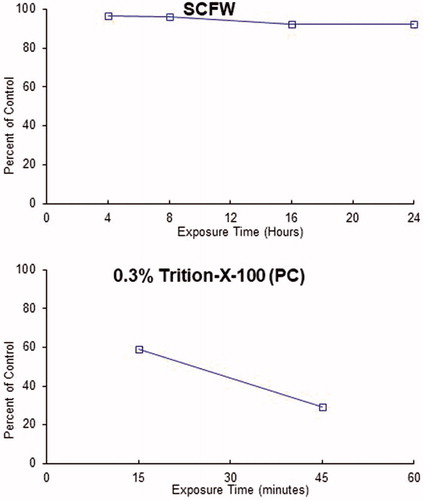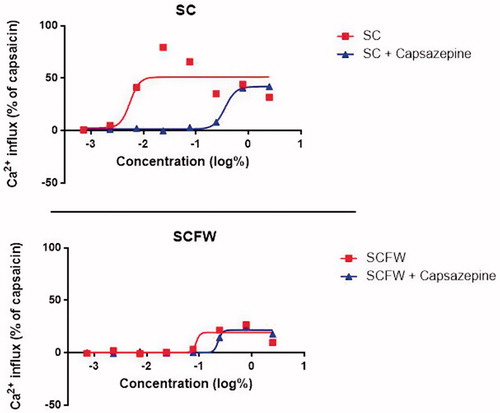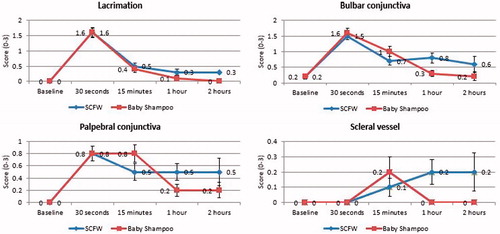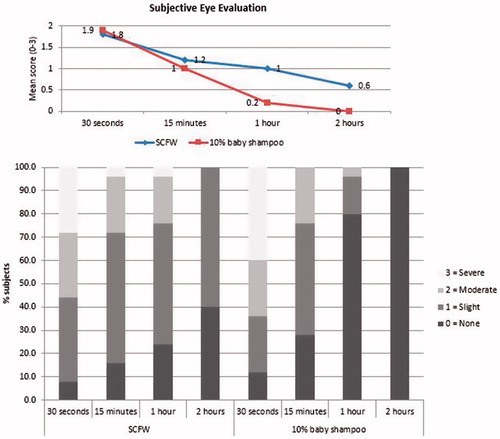Figures & data
Figure 1. Time response curve graphs of the SCFW and the positive control. PC: positive control; SCFW: sunscreen fusion water.

Table 1. Criteria for a product to be classified as stinging to the eye, using the NociOcular Assay for surfactants.
Table 2. Scales for objective ophthalmological evaluation in ocular instillation clinical study.
Figure 2. Ca2+ influx in response to capsaicin for SCFW and SC with or without capsazepine. SC: oil-in-water sunscreen; SCFW: sunscreen fusion water.

Table 3. ET50 values determined with EpiOcular time-to-toxicity (ET-50) test.
Table 4. Results of NociOcular Assay.
Figure 3. Ophthalmological evaluation scores at each time point. Values are mean (SEM); SCFW, sunscreen Fusion Water. SEM: standard error of mean.

Table 5. Demographic characteristics of ocular instillation study subjects.
Table 6. Ophthalmological evaluation scores represented as means (SD) of individual scores.
Table 7. Subjective assessment – Mean scores (SD) per assessment time and sum scores for prickling, tingling, burning, stinging, itching.

